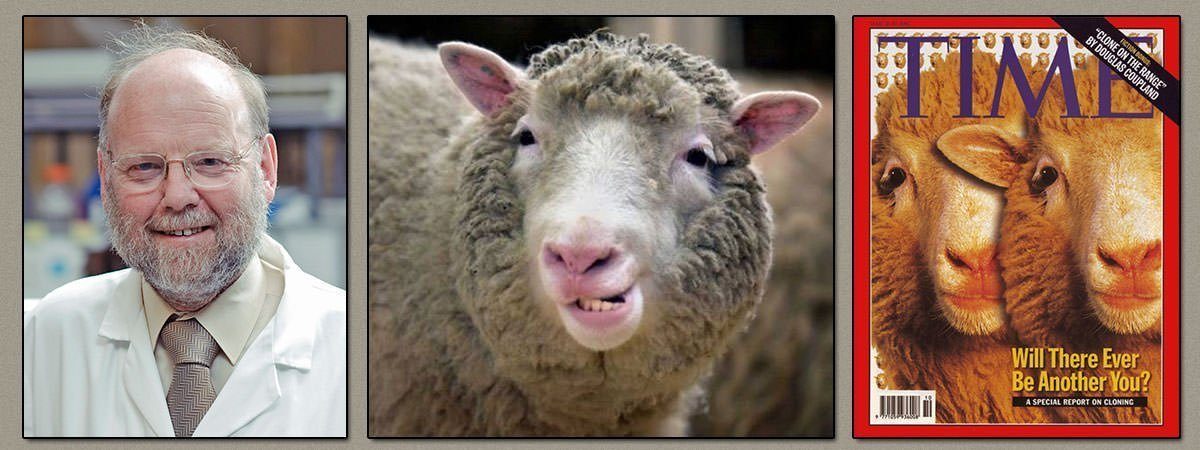Dolly the sheep is famous as the first mammal to be cloned from an adult cell. When her existence was announced to the public it created a sensation around the world and Dolly was covered extensively in the media. Here are 10 interesting facts about the cloning process that led to her creation; her life, death and other relevant information.
#1 SHE WAS NOT THE FIRST MAMMAL TO BE CLONED
Cloning is a process by which a genetically identical individual organism is produced. It is prevalent in nature with organisms such as bacteria, insects or plants reproducing asexually to produce clones. A clone has an identical DNA sequence as its parent. Several clones were produced in labs before Dolly the sheep including mice, sheep and cows. But all of them were cloned from the DNA from embryos.
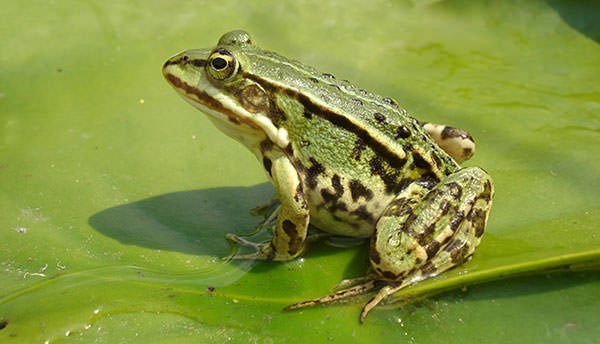
#2 DOLLY THE SHEEP WAS THE FIRST MAMMAL TO BE CLONED FROM AN ADULT CELL
Dolly the sheep was the first mammal to be cloned, not from a cell taken from embryos, but from an adult cell. This was highly significant because it showed that DNA from an adult cell, which has been programmed to express only a distinct subset of its genes, can be used to develop an entirely new organism.
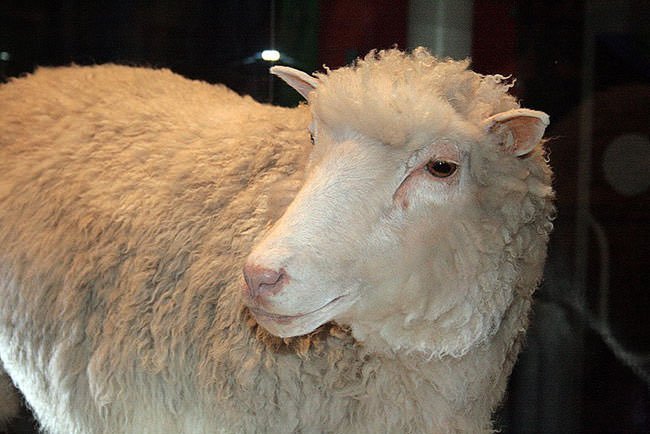
#3 SHE WAS CREATED USING A TECHNIQUE KNOWN AS SCNT
Dolly was cloned by using a technique known as somatic cell nuclear transfer (SCNT). It involves taking an oocyte (egg cell) and removing its nucleus. Then the nucleus of a somatic (body) cell, which contains the DNA to be cloned, is implanted into the egg cell from which the nucleus had been removed.
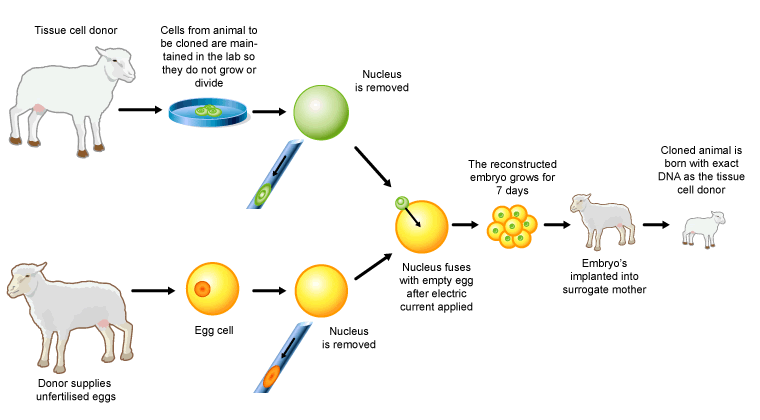
#4 DOLLY WAS CLONED FROM A FINN-DORSET
The cell used as the donor for the cloning of Dolly was taken from the mammary gland of a 6 years old Finn-Dorset ewe. The unfertilized egg was taken from a Scottish Blackface ewe. From 277 fertilized eggs, 29 early embryos developed. They were planted into 13 surrogate mothers. Only one pregnancy went full term resulting in the birth of Dolly on 5 July 1996.
#5 SHE WAS CLONED BY A TEAM LED BY SIR IAN WILMUT
Dolly was cloned at the Roslin Institute, which is an animal sciences research institute in Scotland, part of the University of Edinburgh. She was created by a research group led by British embryologist Ian Wilmut. The funding for Dolly’s cloning was provided by PPL Therapeutics and the Ministry of Agriculture.
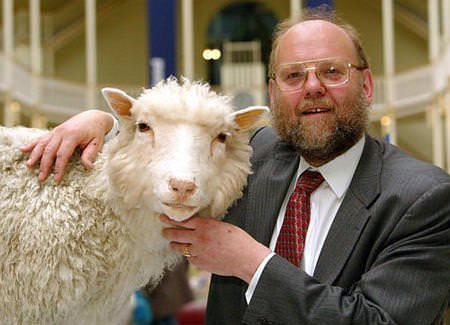
#6 DOLLY THE SHEEP IS NAMED AFTER DOLLY PARTON
Dolly is named after famous country singer Dolly Parton who is the composer of many well-known songs like “I Will Always Love You”, “Jolene” and “Coat of Many Colors”. The reason behind it in Wilmut’s words is that “Dolly is derived from a mammary gland cell and we couldn’t think of a more impressive pair of glands than Dolly Parton’s”.

#7 DOLLY IS CALLED THE “THE WORLD’S MOST FAMOUS SHEEP”
Though Dolly was born in July 1996, her existence was announced to the public on 22 February 1997. It instantly created a sensation with Dolly gaining much attention in the media. There was a special report on Dolly in the TIME and Science featured her as the breakthrough of the year. Since then Dolly has been widely called as “the world’s most famous sheep”.
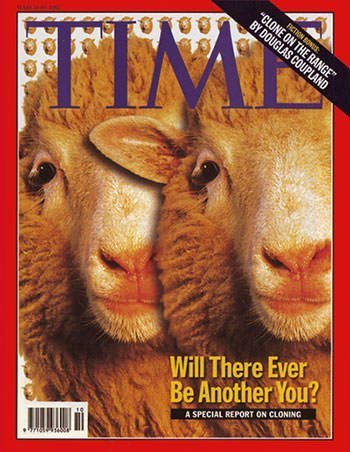
#8 DOLLY WAS EUTHANIZED AS SHE HAD DEVELOPED A LUNG DISEASE
Dolly lived her entire life at the Roslin Institute in Edinburgh, Scotland. She was bred with a Welsh Mountain ram and produced six lambs in total showing that an animal clone from an adult cell can reproduce normally. Dolly was euthanized on 14 February 2003 as she had developed a form of lung cancer called Jaagsiekte and severe arthritis.
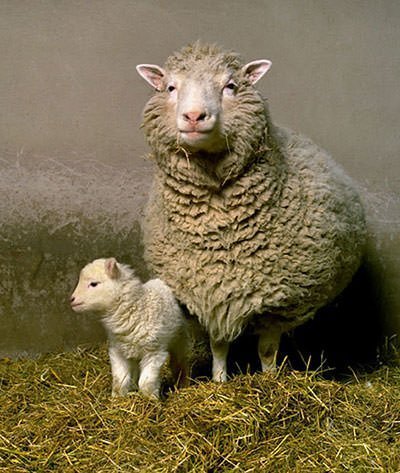
#9 HER PREMATURE DEATH LED TO CLAIMS THAT SHE HAD AGED EARLY DUE TO CLONING
A Finn Dorset has a life expectancy of around 11 to 12 years but Dolly lived for only 6.5 years. This led to scientists claiming that Dolly aged early as she was raised from a nucleus of a six year old sheep. Roslin researchers however stated that other sheep in the same flock had died from the same lung disease. Also the disease was common in sheep kept indoors and Dolly had to be kept indoors for security reasons. In 2013, it was shown through mice that the nuclei didn’t age irreversibly.
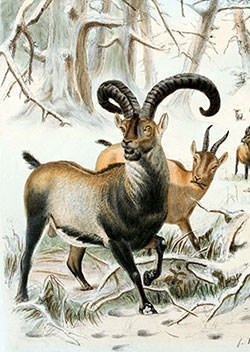
#10 EFFORTS ARE BEING MADE TO CLONE ENDANGERED AND EXTINCT SPECIES
After the successful cloning of Dolly, many other large mammals were cloned, including pigs, deer, horses and bulls. With improvement in techniques, cloning of animals has become cheaper and more reliable. In 2009, the cloning of Pyrenean ibex was announced. It is a form of mountain goat that was declared extinct in 2009. Although the clone died shortly after birth, it was the first time an extinct species was cloned. Thus cloning may prove beneficial in saving endangered and newly extinct species by resurrecting them from frozen tissue.

